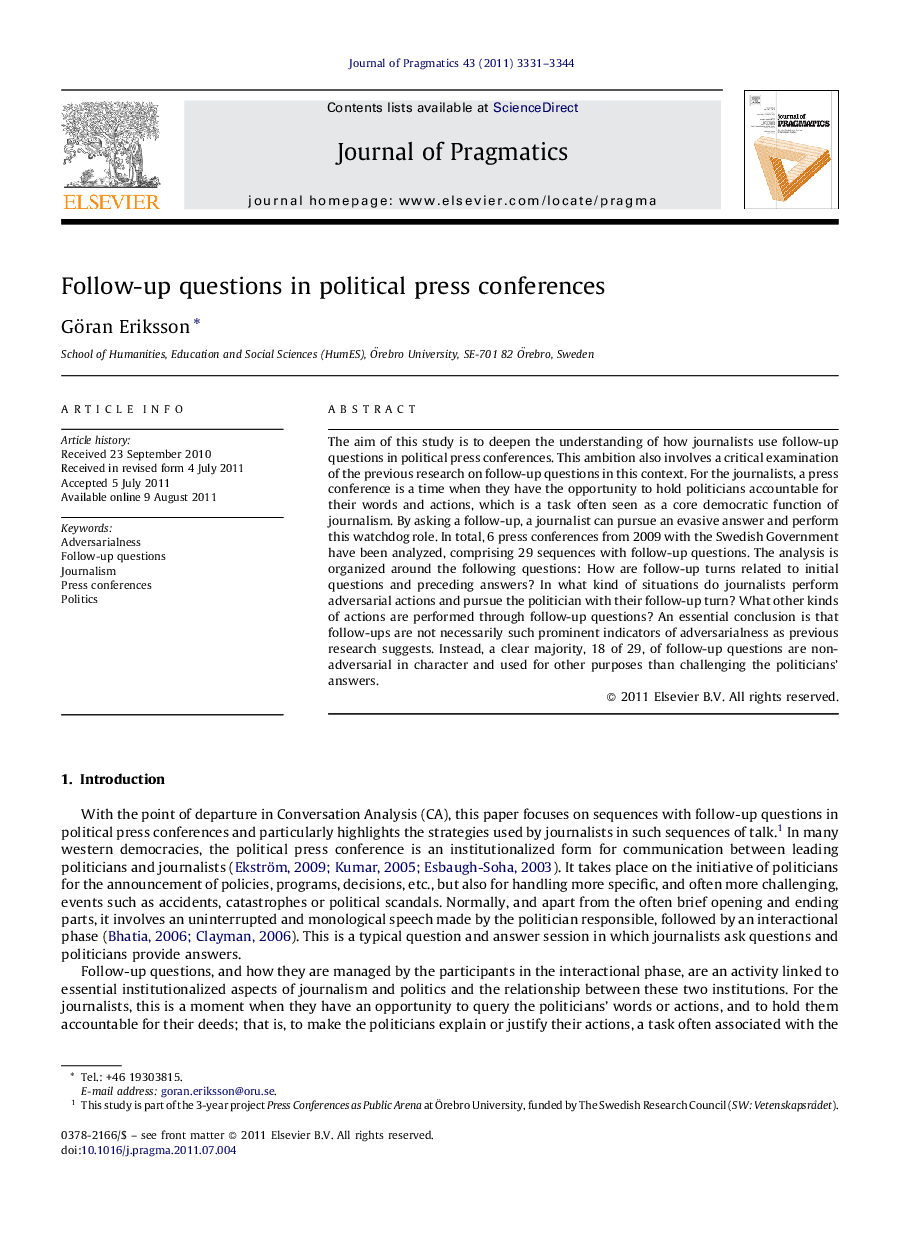| Article ID | Journal | Published Year | Pages | File Type |
|---|---|---|---|---|
| 933104 | Journal of Pragmatics | 2011 | 14 Pages |
The aim of this study is to deepen the understanding of how journalists use follow-up questions in political press conferences. This ambition also involves a critical examination of the previous research on follow-up questions in this context. For the journalists, a press conference is a time when they have the opportunity to hold politicians accountable for their words and actions, which is a task often seen as a core democratic function of journalism. By asking a follow-up, a journalist can pursue an evasive answer and perform this watchdog role. In total, 6 press conferences from 2009 with the Swedish Government have been analyzed, comprising 29 sequences with follow-up questions. The analysis is organized around the following questions: How are follow-up turns related to initial questions and preceding answers? In what kind of situations do journalists perform adversarial actions and pursue the politician with their follow-up turn? What other kinds of actions are performed through follow-up questions? An essential conclusion is that follow-ups are not necessarily such prominent indicators of adversarialness as previous research suggests. Instead, a clear majority, 18 of 29, of follow-up questions are non-adversarial in character and used for other purposes than challenging the politicians’ answers.
► This study examines journalists’ follow-up questions in political press conferences. ► The data are from press conferences with the Swedish government. ► Follow-ups are mainly used for other purposes than to accomplish accountability. ► A majority of the questions are used for more information-seeking purposes. ► Follow-ups are not necessarily a prominent indicator of adversarialness.
